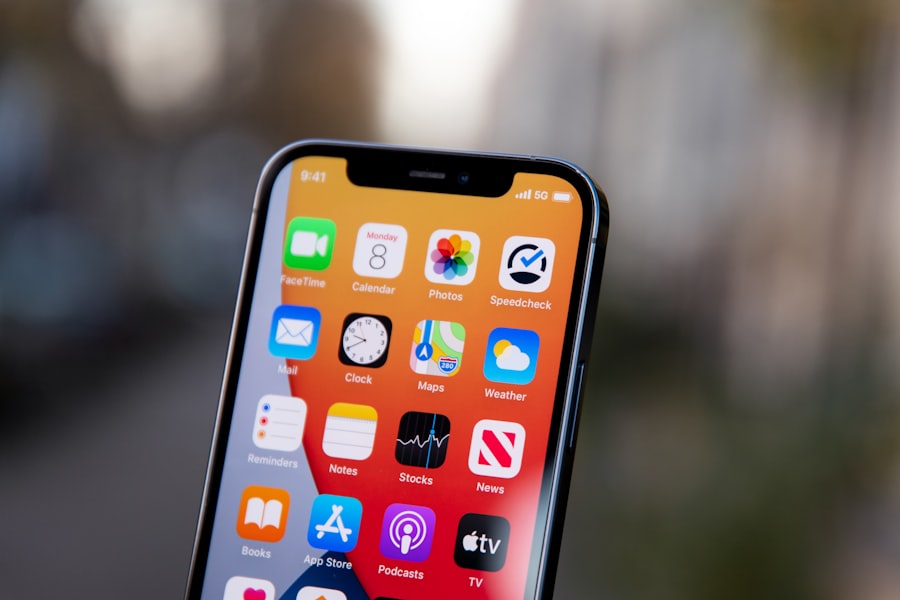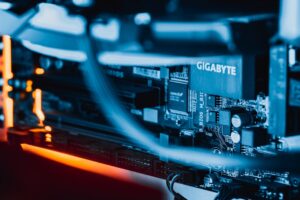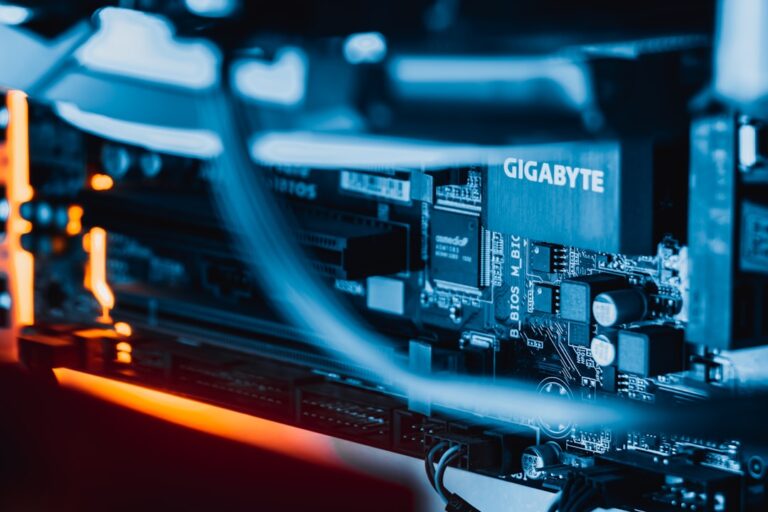5G technology represents a significant leap forward in mobile telecommunications, characterized by its ability to deliver faster data speeds, lower latency, and greater capacity compared to its predecessors, such as 4G LTE. One of the most notable features of 5G is its use of higher frequency bands, particularly in the millimeter-wave spectrum, which allows for the transmission of vast amounts of data at unprecedented speeds. While 4G networks typically operate within the frequency range of 700 MHz to 2.5 GHz, 5G can utilize frequencies up to 100 GHz.
This shift not only enhances data throughput but also enables the simultaneous connection of a multitude of devices, paving the way for a more interconnected world. Moreover, 5G technology introduces advanced network architectures, such as network slicing, which allows operators to create multiple virtual networks within a single physical infrastructure. This capability enables tailored services for different applications, ranging from ultra-reliable low-latency communications (URLLC) for critical applications like autonomous driving to enhanced mobile broadband (eMBB) for high-definition video streaming.
The combination of these features positions 5G as a transformative force in telecommunications, setting it apart from previous generations and laying the groundwork for innovations across various sectors.
Key Takeaways
- 5G technology offers significantly faster speeds and lower latency compared to previous generations, enabling new applications and services.
- 5G will revolutionize connectivity across industries, enabling real-time data transfer, remote operations, and enhanced automation.
- The Internet of Things will be transformed by 5G, allowing for seamless communication between a vast array of devices and sensors.
- 5G will play a crucial role in the development of smart cities, improving infrastructure, transportation, and public services.
- In healthcare, 5G will enable improved telemedicine and remote patient monitoring, leading to better access to care and more efficient healthcare delivery.
The Impact of 5G on Industries: How It Will Revolutionize Connectivity
The advent of 5G technology is poised to revolutionize numerous industries by enhancing connectivity and enabling new business models. In manufacturing, for instance, the integration of 5G can facilitate the implementation of smart factories where machines communicate in real-time, optimizing production processes and reducing downtime. With the ability to connect thousands of devices simultaneously, manufacturers can leverage data analytics and machine learning to predict equipment failures before they occur, thereby minimizing disruptions and improving overall efficiency.
In the transportation sector, 5G is expected to play a crucial role in the development of autonomous vehicles. The low latency and high reliability of 5G networks will allow vehicles to communicate with each other and with infrastructure in real-time, enhancing safety and traffic management. For example, vehicles equipped with 5G technology can receive instant updates about road conditions or traffic signals, enabling them to make informed decisions on the fly.
This level of connectivity not only promises to improve the efficiency of transportation systems but also has the potential to reduce accidents and enhance the overall driving experience.
5G and the Internet of Things: Transforming the Way Devices Communicate

The Internet of Things (IoT) is set to experience a paradigm shift with the rollout of 5G technology. The increased bandwidth and reduced latency offered by 5G networks will enable a vast number of devices to connect seamlessly and communicate with one another. This capability is particularly significant in environments where large-scale IoT deployments are essential, such as smart homes, industrial automation, and agricultural monitoring.
For instance, in smart agriculture, farmers can utilize 5G-enabled sensors to monitor soil conditions, crop health, and weather patterns in real-time, allowing for more precise farming practices that can lead to increased yields and reduced resource consumption. Furthermore, the synergy between 5G and IoT will facilitate the development of innovative applications that were previously unattainable due to connectivity limitations. Smart cities will benefit from this integration as well; for example, connected traffic lights can adjust their timing based on real-time traffic data collected from vehicles and pedestrians.
This dynamic management can alleviate congestion and improve urban mobility. Additionally, smart waste management systems can optimize collection routes based on sensor data that indicates when bins are full, thereby reducing operational costs and environmental impact.
The Role of 5G in Smart Cities: Enhancing Urban Infrastructure and Services
| City | Population | 5G Coverage | Smart Infrastructure |
|---|---|---|---|
| New York | 8.4 million | 80% | Smart street lights, traffic management |
| Tokyo | 9.3 million | 90% | Smart waste management, public transportation |
| London | 8.9 million | 75% | Smart energy grids, water management |
As urban populations continue to grow, the need for efficient infrastructure and services becomes increasingly critical. 5G technology is poised to be a cornerstone in the development of smart cities by enhancing urban infrastructure through improved connectivity and data management capabilities. With its ability to support a multitude of connected devices, 5G can facilitate real-time monitoring and management of city services such as public transportation, energy distribution, and waste management.
For instance, public transportation systems can leverage 5G networks to provide real-time updates to commuters about bus or train arrivals, improving overall user experience and encouraging public transit usage. Additionally, smart energy grids powered by 5G can optimize energy distribution based on demand fluctuations, integrating renewable energy sources more effectively into the grid. This not only enhances energy efficiency but also contributes to sustainability goals by reducing carbon footprints associated with urban living.
5G and Healthcare: Improving Telemedicine and Remote Patient Monitoring
The healthcare sector stands to gain immensely from the implementation of 5G technology, particularly in the realms of telemedicine and remote patient monitoring. With its high-speed connectivity and low latency, 5G enables healthcare providers to conduct virtual consultations with patients in real-time, regardless of geographical barriers. This capability is especially beneficial for individuals in rural or underserved areas who may have limited access to healthcare facilities.
For example, a patient experiencing symptoms can consult with a specialist via a high-definition video call without needing to travel long distances. Moreover, remote patient monitoring becomes more feasible with 5G technology as medical devices can transmit data continuously and securely to healthcare providers. Wearable devices that monitor vital signs such as heart rate or blood glucose levels can send alerts in real-time if any abnormalities are detected.
This proactive approach not only enhances patient care but also reduces hospital readmissions by allowing healthcare professionals to intervene before conditions worsen. The integration of 5G into healthcare systems thus promises to improve outcomes while also streamlining operations within medical facilities.
5G and Entertainment: The Evolution of Streaming, Gaming, and Virtual Reality

The entertainment industry is on the brink of transformation with the advent of 5G technology, which promises to enhance user experiences across various platforms such as streaming services, gaming, and virtual reality (VR). With significantly higher data speeds and lower latency than previous generations, 5G enables seamless streaming of high-definition content without buffering or interruptions. This capability is particularly relevant as consumers increasingly demand high-quality video content on their devices.
For instance, platforms like Netflix and Hulu can deliver ultra-high-definition (UHD) content more efficiently, catering to viewers who expect nothing less than pristine quality.
Gamers can access high-quality games on their mobile devices or low-end computers while enjoying a lag-free experience akin to that of traditional gaming consoles.
Furthermore, augmented reality (AR) and virtual reality applications will benefit from the enhanced capabilities of 5G networks. For example, multiplayer VR games can provide immersive experiences where players interact in real-time within shared virtual environments without experiencing delays that could disrupt gameplay.
Security and Privacy Concerns with 5G: Addressing Potential Risks
While the benefits of 5G technology are substantial, it also raises significant security and privacy concerns that must be addressed as networks are deployed globally. The increased number of connected devices creates a larger attack surface for cybercriminals seeking to exploit vulnerabilities within the network. For instance, IoT devices that lack robust security measures could be compromised and used as entry points for larger attacks on critical infrastructure or personal data theft.
Moreover, the complexity of 5G networks introduces challenges related to data privacy. As more personal information is transmitted over these networks—whether through health monitoring devices or smart home systems—there is an increased risk that sensitive data could be intercepted or misused. To mitigate these risks, it is essential for stakeholders—including network operators, device manufacturers, and policymakers—to implement stringent security protocols such as end-to-end encryption and regular software updates.
Additionally, public awareness campaigns about safe practices when using connected devices can empower consumers to protect their privacy in an increasingly interconnected world.
The Future of 5G: Anticipated Developments and Innovations
Looking ahead, the future of 5G technology is filled with potential developments that could further enhance its capabilities and applications across various sectors. One anticipated innovation is the expansion of network infrastructure through the deployment of small cells—compact base stations that can be installed in urban areas to improve coverage and capacity. This approach will be crucial in densely populated regions where traditional cell towers may struggle to meet demand.
Furthermore, advancements in artificial intelligence (AI) are expected to play a significant role in optimizing network performance and management. AI algorithms can analyze vast amounts of data generated by connected devices in real-time, enabling predictive maintenance for network infrastructure and enhancing user experiences through personalized services. As industries continue to explore new use cases for 5G technology—from autonomous vehicles to smart agriculture—the ongoing evolution of this technology will undoubtedly shape how we live and work in the years to come.
In conclusion, while this article has explored various facets of 5G technology—from its unique characteristics compared to previous generations to its transformative impact on industries—there remains much more to uncover as this technology continues to evolve. The interplay between connectivity advancements and emerging technologies will undoubtedly lead us into an era marked by unprecedented innovation and opportunity across all sectors.
The advent of 5G technology is revolutionizing the way we connect and communicate, offering unprecedented speeds and connectivity that promise to transform industries and daily life. As we delve into the technical intricacies of 5G, it’s essential to have a foundational understanding of the technologies that underpin it, such as markup languages. For those interested in exploring this foundational aspect, the article Understanding Markup Languages: An Overview provides a comprehensive look at how these languages function and their role in the digital landscape, which is crucial for grasping the broader implications of 5G advancements.





















+ There are no comments
Add yours